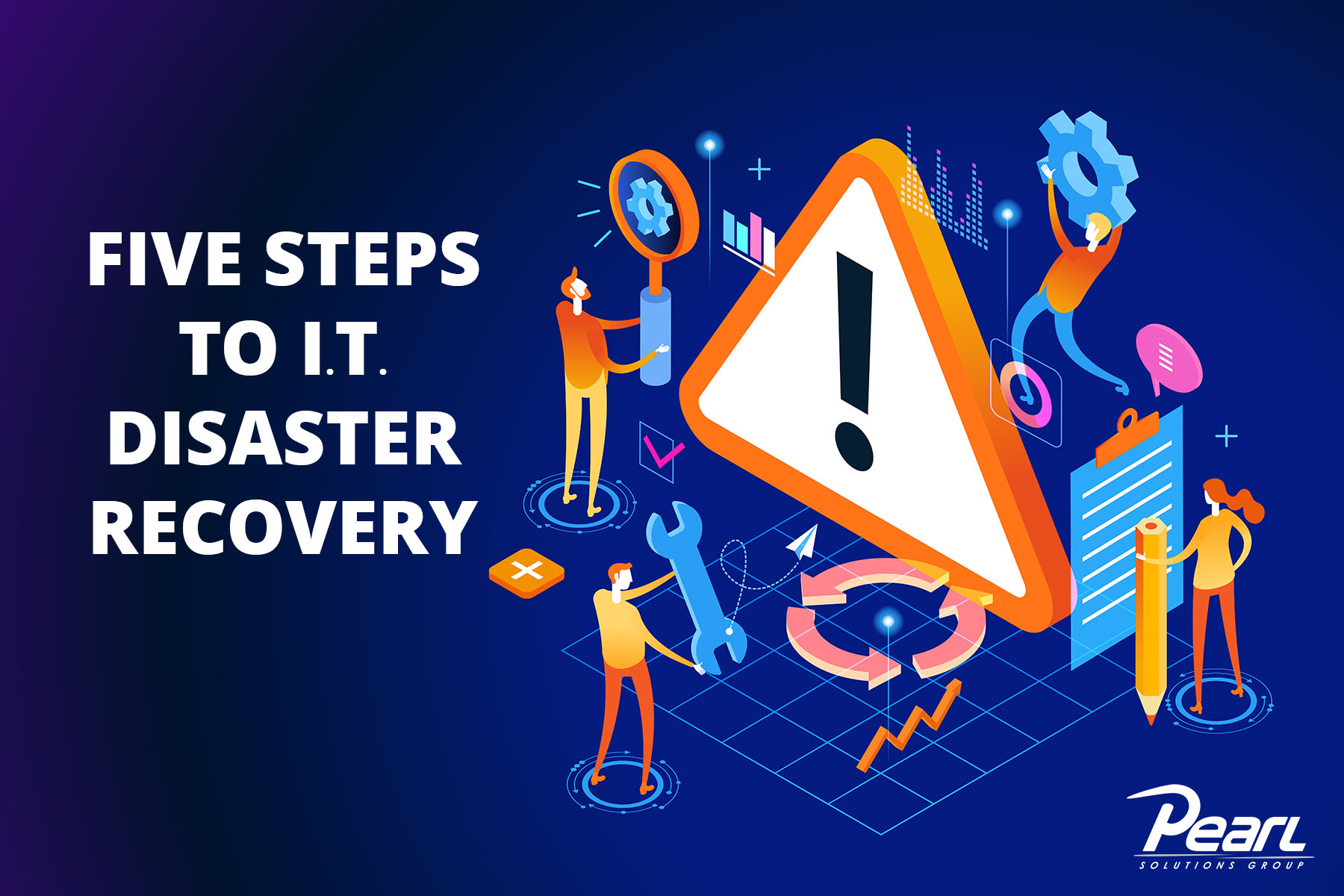Disasters can strike at any time, causing havoc to your business operations. Having a well-structured IT disaster recovery framework is crucial to ensure your business can bounce back swiftly. Follow these five steps to IT disaster recovery:
- Risk Assessment and Business Impact Analysis. Before you can create a disaster recovery framework, you have to identify potential threats that your business might face. Start by identifying risks, including hardware failures, cyberattacks, natural disasters, and human errors, that could disrupt your operations. For each risk, complete a detailed analysis of how each could impact your business processes, data integrity, customer relationships, and overall reputation. By evaluating these risks based on their potential consequences, you’ll be equipped to prioritize them effectively and lay the foundation for a targeted and robust disaster recovery plan.
- Define Recovery Objectives: With a clear understanding of the potential risks and their impact, the next step is to define recovery objectives. Recovery Time Objectives (RTOs) and Recovery Point Objectives (RPOs) are key metrics that establish the parameters for your recovery efforts. RTO represents the maximum allowable downtime for each critical system or process. It outlines how quickly your business needs to be up and running again after a disruption. On the other hand, RPO defines the acceptable data loss in case of a disaster – it dictates how much data your business can afford to lose during recovery. A well-balanced approach to setting RTOs and RPOs is essential, ensuring that recovery is swift enough to minimize downtime and data loss while being realistic about the technological and operational feasibility.
- Develop the Disaster Recovery Plan: This serves as the blueprint for how your business will respond to various disaster scenarios. It outlines a structured set of procedures and actions to be taken during disruptions, guiding your team through a well-coordinated recovery process. Include a detailed breakdown of roles and responsibilities, specifying who is accountable for what tasks during emergencies. Your disaster recovery plan should also encompass a range of scenarios, from data breaches and hardware failures to natural disasters, to ensure preparedness for any eventuality. Regularly updating the plan and involving key stakeholders in its development ensures that it remains relevant and adaptable to evolving technologies and business needs.
- Select Recovery Solutions: Depending on the nature of your business and the risks identified, you’ll need to carefully choose the methods and technologies that will help you restore operations efficiently. These recovery solutions can include data restoration from backups, failover to redundant systems, cloud-based recovery services, and more. Each solution should directly address the RTOs and RPOs you’ve set, ensuring that your recovery efforts are not only effective but also in line with your business’s specific needs. By selecting the right recovery solutions, you’re laying the foundation for a resilient IT disaster recovery framework that can quickly bring your systems and processes back online, minimizing downtime and ensuring business continuity.
- Testing and Training: To ensure the effectiveness of your IT disaster recovery plan, rigorous testing and continuous training are critical. Regular testing provides the opportunity to simulate various disaster scenarios in a controlled environment, validating the readiness of your plan and identifying potential weaknesses. Conduct tabletop exercises involving key personnel to simulate decision-making processes during a crisis. Full-scale drills can help your team practice executing recovery procedures in real time. Alongside testing, ongoing training for employees is vital to ensure everyone is well-versed in their roles and responsibilities during emergencies. This collective preparedness fosters confidence and seamless coordination when disaster strikes. By consistently refining your plan through testing and training, you empower your organization to respond effectively, minimizing disruptions and enhancing your overall resilience in the face of IT disasters.
By following these steps, you’ll be well-prepared to handle IT disasters and ensure minimal disruptions to your business operations. Remember that a well-crafted IT disaster recovery framework requires continuous evaluation and refinement to stay effective in the face of evolving threats and technologies. If you need help getting started, we have expertise in building, managing, securing, and recovering IT networks. During September, we are offering a Disaster Recovery Business Assessment (a $300 value!) for FREE! Get in touch.




